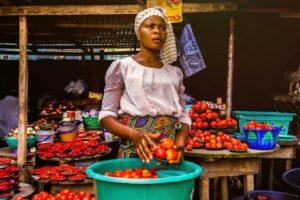South Africa, often referred to as the ‘Rainbow Nation’, is a vibrant tapestry of cultures, languages, and traditions. This richness is reflected nowhere better than in its food culture. A melting pot of flavors, South Africa’s cuisine is a delicious testament to its diverse history and heritage.
From the hearty stews of the Zulu tribe to the spicy curries of the Indian community, each dish tells a story. The country’s culinary landscape is a fascinating journey of flavors, each bite an exploration of its complex past. This article delves into the mouthwatering world of South Africa’s food culture, promising a feast for the senses.
South Africa Food Culture
Navigating through South Africa’s food culture offers a decadent dive into a melting pot of diverse yet interconnected culinary traditions. It showcases a variety of dishes tied closely with the country’s colorful history and rich heritage.
Influences on South African Cuisine 
South African cuisine exhibits a broad range of influences. The initial inhabitants, comprising the Khoisan and Zulu tribes, laid down the basics with a diet mainly revolving around organic fruits, vegetables, and game meats. The arrival of Europeans, particularly the Dutch, French, and British, introduced new food preparation techniques and ingredients—including breads and pastries which were previously unknown in the area. The heavy influence of the Indian indentured laborers is also apparent which marked the advent of curries, chutneys, and a variety of spices in the South African diet. Each layer of history brings with it distinct flavors, contributing to the unique gastronomic identity South Africa holds today.
Key Ingredients in South African Cuisine
Central to South African cuisine, certain ingredients betray a tale of the land, its people, and their history. Maize, for example, features prominently across several dishes, from mielepap—a coarse type of polenta—to umqombothi, a traditional beer brewed mainly from maize. Game meat, a testament to the bountiful wildlife, ranges from Venison to Springbok, proving a key source of protein. Seafood’s strong presence, especially crayfish and line fish, highlights the country’s extensive coastline. The inclusion of a variety of spices, from turmeric to coriander, signifies the historical Indian influence. By identifying these staple ingredients, one unravels the narrative of South Africa’s vibrant food culture.
Traditional South African Dishes
Peeking into the gastronomic world of South Africa, traditional dishes stand as culinary memoirs of the multi-faceted heritage of this land. Here, we dive deeper into a triumvirate of categories in South African cuisine – popular meat dishes, favorite seafood delights, and iconic desserts.
 Popular Meat Dishes
Popular Meat Dishes
Dominating the South African food palette, meat dishes tell a tale of the nation’s fondness for barbecue, locally known as Braai, or potjiekos, slow-cooked stews. Biltong, air-dried and cured meat, illustrates an age-old preservation method, while Bobotie, made of minced meat, spices, and topped with an egg-based layer, manifests traces of Southeast Asian impact. Boerewors, coiled hand-made sausages resplendent with traditional African spice blends, graces almost every Braai event, showcasing communal cooking’s ambient nature.
Favorite Seafood Delights
South Africa’s expansive coastline yields a varied seafood repertoire. Snoek, a type of mackerel, often barbecued, attests to the region’s Dutch influence. Peri-peri Prawns, influenced by Portuguese flavors, bear the characteristic piquancy of the peri-peri chili. Hake and chips, the local variant of fish and chips, reflects British influence, demonstrating the multicultural weave in South African cuisine.
Iconic South African Desserts
South African desserts straddle textures and taste profiles, from the spongy light Malva Pudding bathed in warm apricot jam sauce to the crunchy sugary Koeksisters, twisted fried dough soaked in syrup. Milktart, another remnant of Dutch influence, presents a subtly spiced custard filling in a pastry crust. Noticeable too is the rich, fruity, and boozy Christmas cake, marinated in brandy or other spirits, echoing the British tradition. Unveiling the sweet side of South African cuisine, these desserts carry tales of colonial ties and local adaptations.
South Africa’s food culture is a vibrant tapestry woven from diverse traditions. Its culinary delights like Biltong, Bobotie, Bunny Chow, and Gatsby are more than just meals – they’re narratives of a rich, multicultural heritage. As initiatives and legislation continue to evolve, it’s clear that the future of South Africa’s food culture is as much about sustainability as it is about taste.



